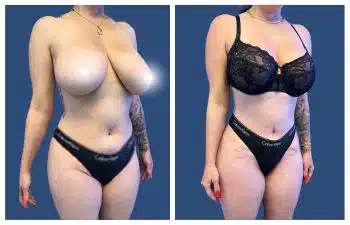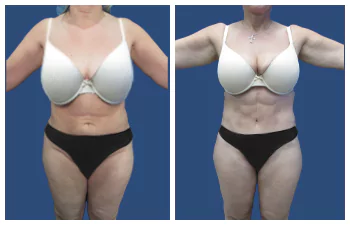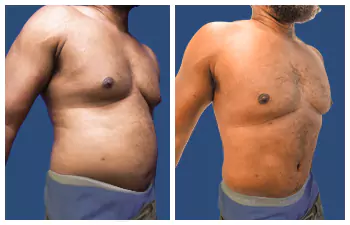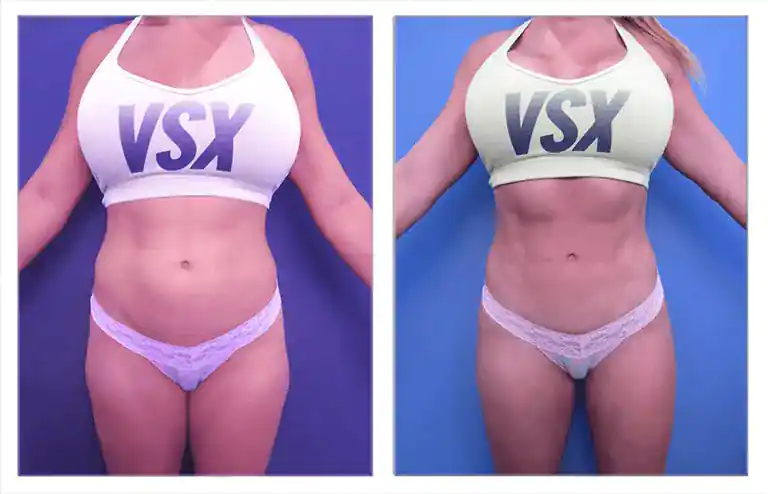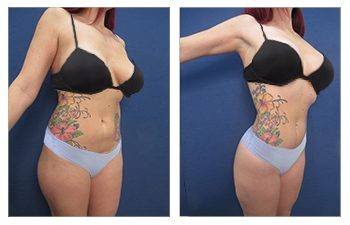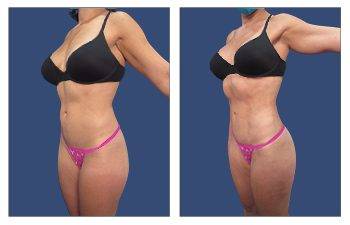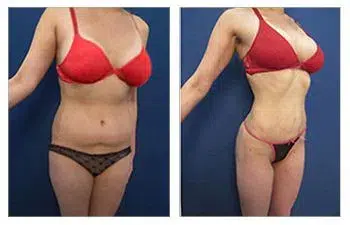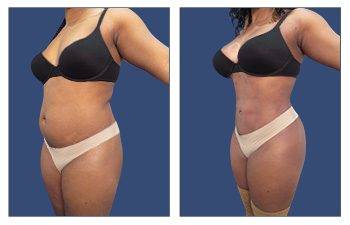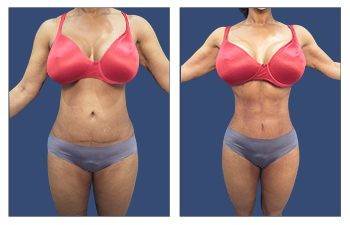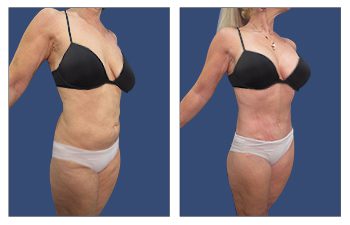Introduction: How to get rid of a Buffalo Hump
A buffalo hump, also known as a dorsocervical fat pad, is a deposit of excess fat located at the base of the neck and upper back. This condition can be caused by various factors, including obesity, Cushing’s syndrome, or certain medications such as corticosteroids. For individuals looking to address the buffalo hump, liposuction has proven to be an effective and minimally invasive procedure for removing the excess fat cells.
During liposuction, a plastic surgeon uses a small tube to suction out the fat deposits, resulting in a more contoured and balanced appearance. This procedure has been shown to provide long-lasting and satisfactory results in reducing the buffalo hump.
However, it is important to note that if the underlying conditions or contributing medications are not addressed, there is a potential for the buffalo hump to return. Therefore, it is crucial to address any underlying health issues or consult with a healthcare professional to determine the best course of action.
In conclusion, liposuction is an effective solution for removing a buffalo hump, providing a safe and reliable method for improving the appearance and self-confidence of individuals with this condition. It is essential to address any underlying factors to prevent the return of the hump.
Why Do People Have a Buffalo Hump?
A buffalo hump, also known as a dorsocervical fat pad, is a fatty deposit that develops at the base of the back of the neck, giving the appearance of a hump. This condition can be caused by various medical conditions and medications.
Cushing’s syndrome and Cushing’s disease are known to cause buffalo hump through the overproduction of cortisol. Long-term use of glucocorticoid medications, such as prednisone, can also lead to the development of this condition. Antiretroviral medications, used to treat HIV, have been associated with buffalo hump due to their side effects. Additionally, Madelung disease, a rare condition characterized by the abnormal accumulation of fat deposits, can also cause buffalo hump.
Hormonal diseases, side effects of medication, genetic or family forms, obesity, and alcohol use can all contribute to the development of buffalo hump.
Addressing the underlying causes of buffalo hump involves treating the medical conditions responsible for its development, such as Cushing’s syndrome or HIV. For example, treatment may include hormone therapy, lifestyle modifications, or surgical interventions to remove the fat deposits. In some cases, buffalo hump may be improved through liposuction or other cosmetic procedures. Understanding the underlying cause is essential for determining the most appropriate treatment approach.
What causes a hump behind the shoulders?
A hump behind the shoulders can be caused by several medical conditions and medications, including Cushing’s syndrome, osteoporosis, long-term steroid use, and HIV medications.
Cushing’s syndrome can cause a hump behind the shoulders due to the excessive production of cortisol, leading to fat accumulation in the upper back. Osteoporosis can also contribute to this hump as a result of weakened and fractured vertebrae. Long-term steroid use, such as for asthma or arthritis, can lead to a condition called steroid-induced osteoporosis, resulting in a hump behind the shoulders. Additionally, some HIV medications can cause fat redistribution, leading to a hump in the upper back.
Symptoms of a hump behind the shoulders may include pain, stiffness, and a noticeable lump or protrusion. Treatment options may include lifestyle changes, such as weight-bearing exercise and a calcium-rich diet, medication adjustments to manage the underlying condition, and in severe cases, surgery to correct the spinal deformity.
Lifestyle changes, including exercise and a healthy diet, can help prevent or minimize the hump. Medication adjustments may involve switching to alternative treatments with a lower risk of bone loss. In some cases, surgery may be necessary to address severe spinal deformities.
How is buffalo hump diagnosed?
Diagnosing a buffalo hump begins with a thorough physical exam by a healthcare professional. The exam involves looking for signs of excess fat accumulation on the upper back and neck. Additionally, the healthcare provider will take a detailed medical history, including any additional symptoms such as changes in weight, muscle weakness, and high blood pressure.
Common tests that may be ordered to identify the cause of the buffalo hump include a bone density test to assess bone strength, a blood test to check for hormone imbalances or other underlying conditions, a CT scan or MRI to get detailed images of the spine and surrounding tissues, and an X-ray to examine the bones in the affected area.
The medical history and additional symptoms play a crucial role in the diagnostic process as they provide important clues about potential underlying causes, such as Cushing’s syndrome, osteoporosis, or other hormonal imbalances. These tests are essential in determining the underlying cause of the buffalo hump, which will guide the appropriate treatment plan.
Surgical Treatment Options for buffalo hump
Buffalo hump, also known as dorsocervical fat pad, is a condition characterized by the abnormal accumulation of fat at the base of the neck and upper back. This can be caused by factors such as obesity, Cushing’s syndrome, or certain medications. While non-surgical options like diet and exercise can help manage buffalo hump, some individuals may opt for surgical treatment to address the issue. In this section, we will explore the various surgical treatment options available for buffalo hump, including liposuction and lipectomy. We will also discuss the effectiveness, risks, and considerations associated with these surgical procedures.
Liposuction of Buffalo Hump
Liposuction of a buffalo hump involves the surgical removal of excess fat tissue from the upper back area. A buffalo hump can be caused by various factors such as obesity, Cushing’s syndrome, long-term use of certain medications, or genetics. Before considering liposuction, it is important to undergo a thorough medical evaluation to determine the underlying cause of the buffalo hump and ensure that liposuction is a suitable option. This may involve blood tests, imaging studies, and consultations with medical specialists.
The recovery process after liposuction of a buffalo hump typically involves a few days of rest, wearing compression garments, and avoiding strenuous activities. Potential risks of the procedure include infection, bleeding, asymmetry, and nerve damage. However, the benefits may include improved appearance, increased self-confidence, and relief from any discomfort or pain associated with the buffalo hump. As with any surgical procedure, it is essential to discuss the potential risks and benefits with a qualified plastic surgeon and carefully follow all post-operative instructions for optimal results and safety.
Renuvion Skin Tightening of Buffalo Hump
Renuvion Skin Tightening is a revolutionary treatment for addressing a buffalo hump, a fat deposit that forms at the base of the neck and upper back. This non-invasive procedure works by using a combination of helium plasma and radiofrequency energy to target and reduce excess fat cells in the area, resulting in a smoother and more sculpted appearance of the neck and back.
The treatment process involves the application of the Renuvion device to the targeted area, where the energy is delivered beneath the skin to stimulate collagen production and tighten the tissue. This results in a reduction of fat and improved skin elasticity, ultimately leading to a more contoured and defined neck and back.
Potential results of Renuvion Skin Tightening for buffalo hump treatment include a noticeable reduction of the hump, improved neck and back appearance, and enhanced overall skin quality. While the procedure is generally safe, potential risks and side effects may include temporary redness, swelling, and bruising at the treatment site. It’s important to consult with a qualified practitioner to assess candidacy and discuss individualized treatment plans. Overall, Renuvion Skin Tightening offers a safe and effective solution for addressing buffalo hump, helping to achieve a more sculpted and defined neck and back.
Excision of Buffalo Hump
The surgical options for excision of buffalo hump include traditional liposuction and the newer Lower Neck AirSculpt method. Traditional liposuction involves making small incisions in the skin and inserting a thin tube to suction out the excess fat. While effective, traditional liposuction can be more invasive and may require general anesthesia. Downtime can also be longer, requiring several weeks for recovery.
On the other hand, the Lower Neck AirSculpt method is a minimally invasive procedure that uses a laser to liquefy and remove the fat from the buffalo hump. This technique involves smaller incisions, and local anesthesia, and typically results in less downtime compared to traditional liposuction.
The best approach for each patient depends on various factors such as the size and location of the buffalo hump, the patient’s overall health, and their desired outcome. Traditional liposuction may be more suitable for larger buffalo humps, while the Lower Neck AirSculpt method may be preferred for more precise sculpting and minimal scarring.
In conclusion, both traditional liposuction and the Lower Neck AirSculpt method are effective surgical options for excision of buffalo hump. The choice of technique should be based on individual patient factors and desired outcomes.
Conclusion: How to Get rid of a Buffalo Hump?
Liposuction is the gold standard treatment for getting rid of a buffalo hump, offering permanent improvement and rapid recovery. This procedure effectively removes excess fat from the hump, resulting in a more contoured and aesthetically pleasing neck and upper back area. However, it is important to address any underlying conditions that may be contributing to the buffalo hump in order to prevent its potential return.
If the underlying factors such as Cushing’s syndrome or obesity are not addressed, there is a risk of the buffalo hump returning even after liposuction. It is crucial to seek plastic surgery and medical advice to properly address the root cause of the buffalo hump and to ensure long-term success.
By addressing the underlying conditions in conjunction with liposuction, patients can achieve optimal results and reduce the risk of the buffalo hump returning. With the permanent benefits of liposuction and the proper attention to any underlying issues, individuals can regain confidence and comfort in their appearance.

